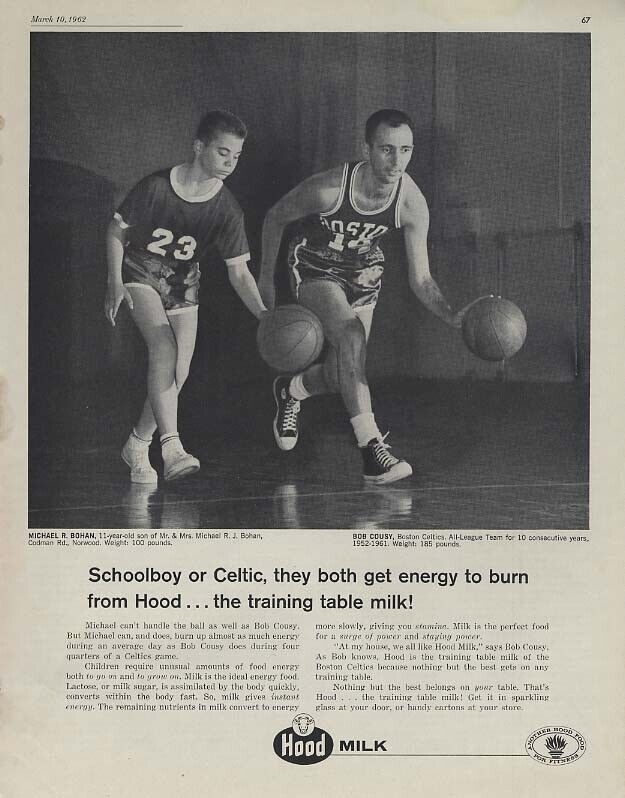In the introduction to my article The Finer Points of Baseball For Everyone Instructional Booklets I mentioned that I only discovered them from my hunt for their basketball-related cousins. Between that and a $10,500 sale for a complete set of 12 booklets in the fall of 2023, it seemed appropriate to dive deep into these incredible basketball collectibles.
How To Play Better Basketball 101
A few auction catalogs and VintageBasketball.com show that a complete set of How To Play Better Basketball booklets has twelve items. Here’s the checklist:
- Ball Handling
- Basic Rules and Court Layout
- Conditioning
- How To Dribble
- How to Pass
- How to Pivot and Fake
- How to Shoot
- Drills for Defense
- Drills for Offense
- Man-To-Man Defense
- Plays for Offense
- Zone Defense
Like the baseball booklets, they’re full-color printings in a newspaper-like material saddle-stitched like a magazine. However, I keep reading that the basketball ones are 4-7/8’’ x 3-1/4’’ while the baseball ones are ~ 4-5/8″ x 3-3/8’’. However, I suspect they were printed and manufactured by the same people and are likely the same size, with a bit of variation from cutting back in the day. While the baseball booklets each have 16 pages, the basketball books have been described as having eight pages, but I haven’t found a complete set of scans from any of them, nor have I been able to speak with anyone who owns one; please reach out if you have one!
Now, not only are the basketball variations way rarer than the baseball ones but there are also two variations!
Hood Diary How To Play Better Basketball Booklets
While the baseball booklets have dozens of advertising backs through the years, the basketball ones only appear to have one produced around 1963 for Hood Dairy when the Bob Cousy Hood Dairy basketball card was produced.
VintageBasketball says they have a Copyright for Lane and Young Incorporated inside with an address of 128 Mallory Ave. New Jersey City, NJ.
Robert Edwards Auctions sold a collection of six of these booklets with a Hood Diary advertisement, a Bob Cousy quote, and his facsimile autograph on the back that they dated to 1963 in the description. They did mention that they vary a bit from natural diamond cuts when it comes to sizing. They sold for just $360 in the summer of 2021.




Interestingly, underneath the right side logo that says “Another Hood Food For Fitness,” there is an indistinguishable copyright emblem. That same logo appears on the baseball booklets; it’s just another point showing how they’re related.


1968 Topps Test How To Play Better Basketball Booklet Pack Inserts
The How To Play Better Basketball Booklets’ second variation was blank-backed and used as an insert in 1968 Topps basketball test packs. The Topps Archive’s blog wrote a post called Better And Better that shared some history behind the test packs and booklets. In the summer of 2017, he got to see the pack, cards, and How To Shoot baseball booklet and noted that it was folded in half to fit in the pack, that the interior was set up like a small comic book, and that the back of it (the booklet) was blank. Here’s the photo he shared.

In September 2017, Mile High Card Co. sold an opened 1968 Topps Test basketball pack, booklet, and cards for $4521.60. They described the booklet as having eight pages of colorized diagrams but having no mention of Topps; here’s their auction photo.

In the summer of 2021, REA sold a collection of seven different blank-backed folded How To Play Better Basketball booklets for $6600. Again, Topps folded down the middle because the booklets were too large for the pack otherwise.




Finally REA sold the following complete set of 12 booklets plus an original 1968 Topps Test envelope for $10,500 in the fall of 2023.


During bidding, I reached out to REA for a bit more information. They confirmed that each booklet was blank-backed, but the only one that displayed any condition issues was the How To Shoot Booklet; none of the others were folded, so perhaps they were extras that didn’t make it into packs. Also, I asked for some information about the internal copyright; they sent me back this photo showing a stamped 1966 copyright and the same Lane & Young, Inc. data that VintageBasketball said was in the Hood Dairy versions of the basketball booklets.

The baseball booklets all have a specific year copyright and either a Vital Publications, Inc. or WM. C. Popper & Co. copyright.
Final Thoughts
Like the Finer Points of Baseball For Everyone booklets, the How To Play Better Basketball items are another great example of a significant historical collectible; the basketball ones are more card-adjacent. However, despite a clear relationship between the sets of booklets (appearance, type, design, that little copyright symbol on the backs of both), I haven’t figured out a relationship between Vital Publications/WM. C. Popper & Co. and Lane & Young Inc., whose copyrights were printed inside the booklets. So, if you have more information about these companies or booklets, please leave a comment or email me.
Happy collecting!









































































































